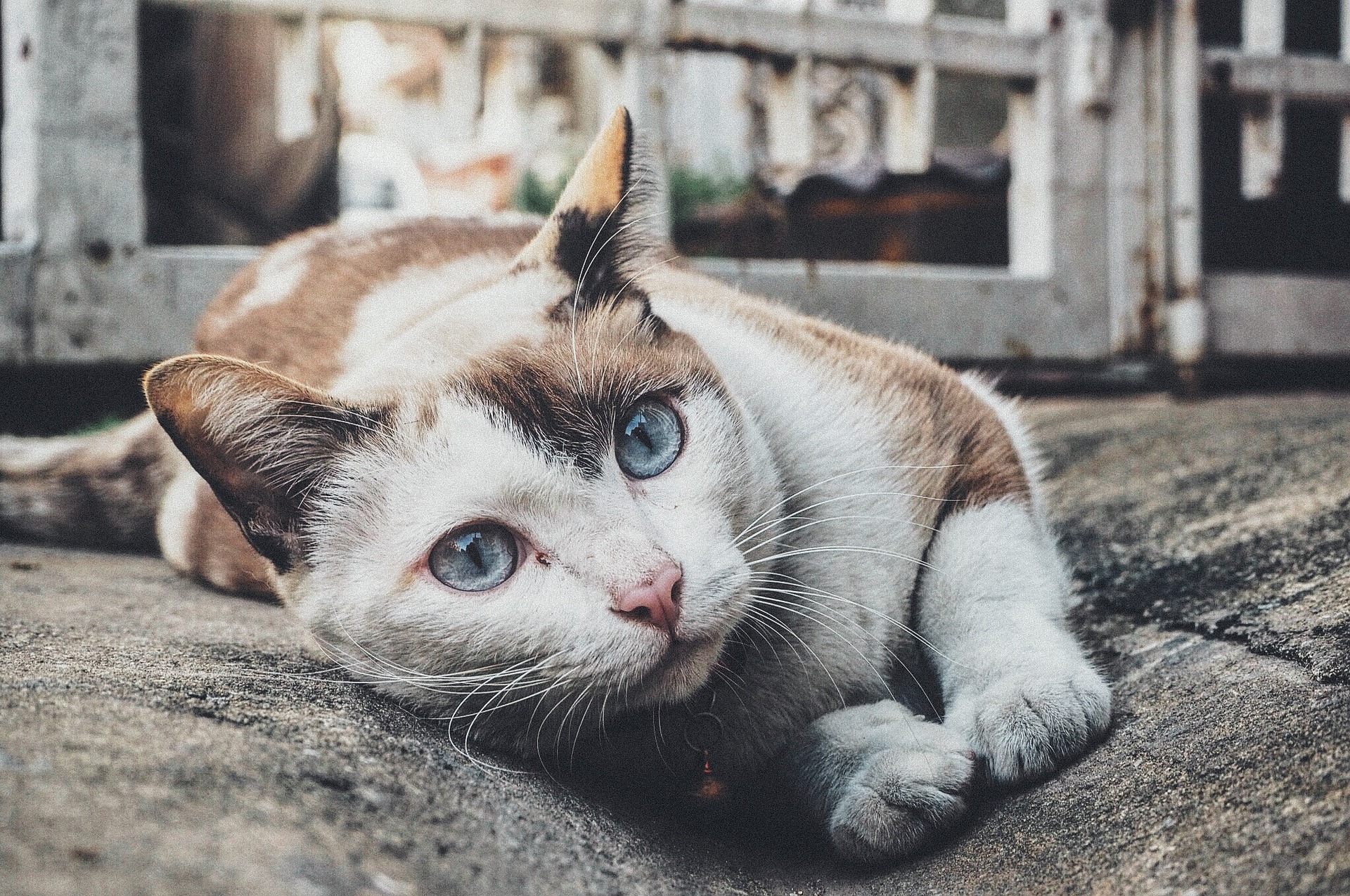Do you need help?

My cat has arthritis, what does this mean?
Arthritis is inflammation of joints which causes pain. It is something we often see in older people and is also commonly recognised in dogs. We don’t often watch our cats moving about like we tend to do when we take dogs on a walk and are used to them being fairly docile at home. This means it is traditionally a disease we often miss as owners and vets. It has been suggested that as many as 90% of older cats show some degree of arthritis.
What causes arthritis in cats?
Osteoarthritis (the type of arthritis we are talking about here) is a disease that allows the cartilage that cushions or joints to become worn away. This means that bones are basically grating against each other whenever the joint moves causing pain and difficulty in moving.
There are some factors that can contribute to the disease just as for humans:
- genetics – some animals are more likely to develop arthritis because of an inherited ‘weakness’ from their parents
- previously damaged joints – such as after a road traffic accident or dislocation – increase the likelihood of those joints developing arthritic changes later in life
- obesity – this doesn’t cause arthritis but does increase the strain loading onto joints and can make the symptoms worse

What are the symptoms of cat arthritis?
The biggest symptom of arthritis is joint pain, unfortunately, this is often very difficult to recognise in cats as they are very good at disguising it. To help diagnose the disease we try and identify signs of pain in general including:
- reduced mobility – this may be your cat no longer seeming to jump onto the work surfaces. They are no longer climbing into the litter tray or struggling to do so. They appear lame when moving.
- reduced grooming – it is most difficult for a cat to reach their back and so cats may develop matted or dandruffy coats, either in general or in the hard to reach areas
- change in behaviour – they may seem to have a sense of humour failure when you are petting them or playing with other animals. They may just be less interactive when you pet them
- less active – no longer going out as much. Not bringing home ‘presents’ for you as often (a sign they may not be hunting as well).
If you think you have seen any or all of these symptoms it’s definitely worth a trip to the vets to have your cat checked over.

How is cat arthritis diagnosed?
Arthritis is often diagnosed using a combination of compatible symptoms noticed by the owner, reduced mobility of joints and/or swollen joints found on clinical exam and potentially x-rays of the joints in question to look for signs of damage. For some cases, a presumptive diagnosis will be made without the benefit of x-rays and then a response to medication is used to confirm suspicions of arthritis.
Is arthritis in cats treatable?
The aim of any treatment for arthritis involves trying to reduce the symptoms of the disease as well as trying to slow the continued development of arthritis in the future. No single therapy is perfect on its own and managing the disease is usually through a combination of therapies.
- Specialist diets – there are special prescription diets available that contain specific products design to support the cartilage in the joints as much as possible. They will take a period of a couple of months before they really benefit your pet but are often very successful long term management tools. Often cats can be placed on medication to relieve immediate symptoms and then start to be weaned off as the diet changes begin to help.
- Weight management – obesity will exacerbate the disease and it’s symptoms so weight loss or management is a very important part in minimising the effects of this disease.
Changes in the home – simple changes in the home can make a really big difference. - Using low sided litter trays can make going to the loo much easier
- Move the food bowl/bed off the top of the fridge or provide ‘steps’ up to it
- Plenty of soft bedding will help give your cat a good night sleep and reduce the difficulty they have in getting going in the morning.
- Medications – often the most effective tool in the first instance is medical therapy such as anti- inflammatories and pain killers. They provide immediate relief for affected animals and can help manage the disease while some of the longer term changes are put into effect.
- Supplements/neutraceuticals – there is a huge market of supplemented out there to help with arthritis. These include essential fatty acids, chondroitins, glucosamines and cod liver oil to name but a few. The actual effectiveness of any of these treatments is often difficult to assess but they are more likely to be of benefit in the early stages of arthritis than in more severe cases. Talk to your vet before heading into this minefield so they can help try and guide you through the things more likely to work than not.
- Alternative therapies – again, it is difficult to say how much benefit things such as acupuncture provide for affected animals but anecdotally some pets do seems to respond well to treatment. If you are interested in something like this discuss it with your vet so they can recommend a qualified veterinary acupuncturist for you.
What is the prognosis for a cat with arthritis?
Ultimately, the disease will continue to progress over time but all of the above therapies will help to slow the progression and also relieve the severity of the symptoms during this time. Often cats will have a good quality of life for many years after the first diagnosis. In general, the sooner the disease is recognised the more successful the treatments are likely to be.

